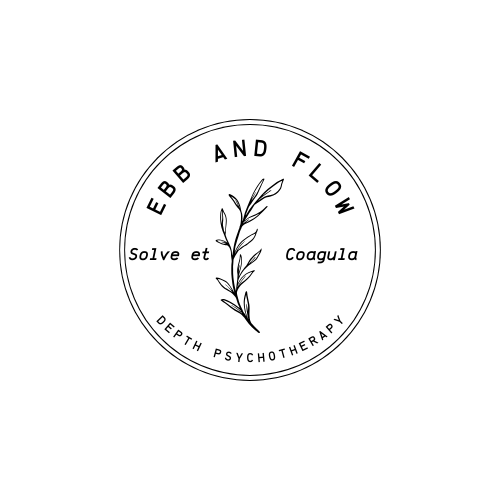Breathwork for Beginners - 3 Tips for Starting Out
Michael Ebbinghaus • November 15, 2021
What is Breathwork and Why Should You Do It?

One of the consequences of the modern era has been the destruction of our relationship with the breath. This tool for greater physical and mental health overlooked in this wake-coffee-commute culture is always at hand.
Historically breathwork has been developed as the practice of pranayama in India. Breathwork has the capacity not just to make us physically stronger but mentally more resilient. Think of it as the body’s reset button. It requires no product, no pill, no substance, only breath and discipline. With the seat of our consciousness hijacked by the total war for our attention, utilizing the breath as a means of altering that consciousness gives us a powerful means with which to retaliate. By consciously altering our state through the breath we can prevent ourselves from mindlessly falling into patterns of habitual behavior.
Breath is sacred. Pneuma
is the spirit. Without it life cannot occur. It brings the outside in and the inside out.
Most breaths we take are mediated by the body, by the unconscious, yet it is one of the few unconscious processes that we can assume conscious control over. The breath, then, is a gateway for expanding consciousness. Whether the objective is to dive into the mystery of the self, to mitigate stress, or to increase athletic performance, active engagement with the breath will yield tremendous results.
The Issue
We are not a society that encourages our citizens to move. We hoist up the public health campaigns and dream up the gym ads while inundating our spaces with hyper-palatable, non-nutritive food and teach our children that being good students means sitting still and listening to teacher, habits that will follow them into adulthood. We awake to groom and feed, sitting our way through our occupations. We attempt to combat the steady stillness with vigorous one-hour workouts that are only mildly effective in correcting our forward head posture and stressful lives. Consistent low-intensity movement throughout the day would be more ideal. What occurs in the prolonged silences of our bodies is the solidification of our form. We cease to be warm and fluid, growing stiff, stagnant, and hunched. If we examine the sitting position, we will find a particular pressure put on the diaphragm as the shoulders and head slump forward and our abdominal cavity collapses. It is the belly, not the chest, that is responsible for the life-giving air, and it is the belly that is crunched into a wedge. We deprive ourselves of breath, and we deprive ourselves of pneuma. Our bodies do not expand, but collapse. The flesh does not remain fluid but turns to stone and pain.
"Deepening the breath brings oxygen, but it also brings confidence."
The collapse of our diaphragmatic space makes us more likely to hunch and maintain poor posture. Over time this can affect the manner in which our skeleton shapes itself. Posture becomes fascia, fascia pulls on bone. It not only makes us look but feel defeated. Slumped shoulders, limp spine, and downward head is nature’s way of communicating that we are not a threat. This is a disastrous position. Engaging with the breath strengthens the diaphragm as well as the accessory breathing muscles like the obliques and intercostal muscles, bolstering our base. As we strengthen these muscles, we pull more air into that space, expanding the tissue and making bends at the waist less natural. Deepening the breath brings oxygen, but it also brings confidence.
The Solution
Working with the breath is excellent if the body has not been worked for a long time. Many begin straight at the level of the physical body and do themselves a disservice with consistent mouth-breathing. Utilizing breathwork requires no specialized equipment or membership fees. It can be done by anyone with a working set of lungs. It yields returns in all aspects of physical training, no matter if one is an advanced athlete or just beginning their journey.
"The breath can become a medium for exploring the Self, of receiving visions and insights, and of connecting to our archetypal energy."
When we are caught in a moment, it is easy to be reflexive – not to respond but to react. Reconnecting to the breath offers us the space to pause - as engagement with certain exercises such as full yogic breathing
leads to subtle put perceptible shifts in consciousness.
Think of what the body does when it is suddenly exposed to cold water or is startled. Gasp! The body knows. It prepares itself to deal with this new situation, and this is precisely what we fail so often to do. We don’t treat the situation as new; we treat it as a template. The more unconsciously we live the likelier we are to do this. Nothing stops the flow of our normal state of consciousness quite like altering the normal state of our consciousness.
The next time we find ourselves in a negative spiral of depression, are enraged at something over which we have no control, or are just feeling plain shitty, engage with the breath, see what the new condition is like. Respond, don’t react.
These subtle alterations, useful for our day-to-day, can become expansive alterations in consciousness if we continue to engage with and deepen our practice. The breath can become a medium for exploring the Self, of receiving visions and insights, and of connecting to our archetypal energy.
Practices found in kundalini yoga
and the holotropic breathwork
of Drs. Grof and Grof are lauded for their ability to induce mystical experience, heal trauma, and expand our being. This is just a continuation of the theme: the breath has the capacity to remove us from our familiar state of consciousness: assumptions fall away and direct experience becomes the only compass. All our trauma-response patterns and other ritualized forms of behavior receive the scrutiny they deserve, and this comes with increased capacity to let go of senescent parts of the self and contact and heal the wounds within.
Engagement with the breath undoes the trauma that our bodies have suffered in the face of our cultural demands. It is the mediator between conscious and unconscious, a piece of advanced technology we’ve largely become ignorant of. Body and mind are linked, as well as mind, body, and environment. No matter what our condition, a breathwork practice will improve posture as well as physical and mental health and performance. What’s best is it is a tool that lies within reach for the entirety of our lives. So get breathin’.
Resources
Below are a few resources that can help you get started. I particularly appreciate Michael Bijker's channel on YouTube.
Provides simple descriptions and variations of breathwork exercises and poses.
This is a 40-minute practice that takes you through 4 different breathing techniques. Condense this practice for a morning ritual.
Michael provides some excellent education around advanced breathing practices and combines them with yoga postures for a breathwork session geared towards entering alternate states of consciousness or mind-body states.


